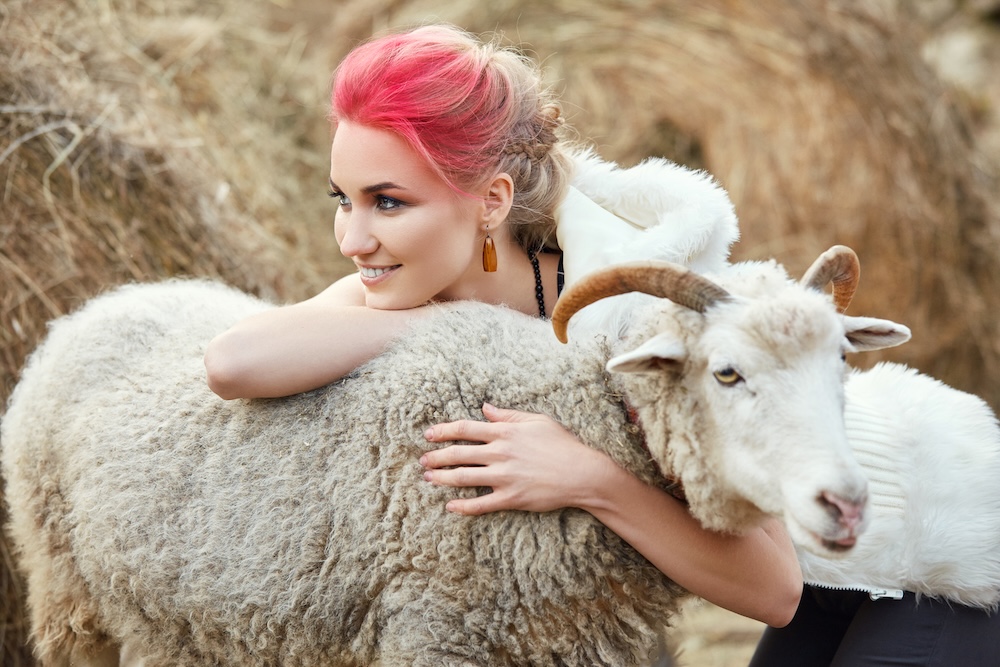Fashion is often described as glamorous, but behind the runway lights is an industry built on animal suffering and environmental damage. Traditional leather, wool, and silk come at the expense of animal lives and ecosystems. The good news is that a growing demand for cruelty-free fashion has ignited a wave of innovation, leading to materials that are not only animal-free but also more sustainable. From polyurethane (PU) to pineapple leaves, mushroom mycelium, cork, and even apple peels, fashion is being reimagined without cruelty stitched into its seams.
Why Cruelty-Free Fashion Matters
Fashion has long relied on animals for luxury. Leather shoes, wool sweaters, silk dresses, and fur coats all symbolize status and elegance — but at a cost.
- Leather: Linked to deforestation, methane emissions, and the slaughter of billions of animals each year.
- Wool: Marketed as natural, but large-scale production involves inhumane shearing and high land use.
- Silk: Requires boiling silkworms alive to preserve cocoon threads.
- Fur: The most obvious form of cruelty, often involving horrific conditions for animals in factory farming.
Consumers increasingly recognize that no look is worth such suffering. Surveys show younger generations are especially unwilling to buy animal-derived products, creating demand for alternatives that align with ethics and sustainability.
The Rise of Alternatives
The demand for cruelty-free fashion has led to the development of new materials that merge innovation with responsibility.
Polyurethane (PU) Leather
- What it is: A synthetic alternative to animal leather.
- Pros: Widely available, versatile, lower cost than leather.
- Cons: Still fossil-fuel-based, not biodegradable, and can release microplastics.
- Sustainability angle: PU is often seen as a transitional solution — better than animal leather in cruelty terms, but not the ultimate answer.
Piñatex (Pineapple Leaves)
- What it is: A material made from fibers of pineapple leaves, a byproduct of pineapple farming.
- Pros: Uses agricultural waste, reducing landfill and providing extra income for farmers.
- Cons: Often requires a petroleum-based coating to enhance durability.
- Sustainability angle: A creative way to turn food waste into wearable textiles.
Mushroom Mycelium Leather
- What it is: Grown from the root-like structure of fungi, forming strong, leather-like sheets.
- Pros: Fully renewable, fast-growing, biodegradable in its raw form.
- Cons: Scaling is still limited, and many commercial versions add plastic coatings.
- Sustainability angle: Holds immense promise as a true circular material.
Cork
- What it is: Harvested from the bark of cork oak trees, which regenerate naturally.
- Pros: Renewable, lightweight, water-resistant, biodegradable.
- Cons: Limited to certain applications, often used for accessories.
- Sustainability angle: One of the most eco-friendly cruelty-free materials available today.
Apple Leather (Apple Peels)
- What it is: Made from apple waste (peels and cores) from the juice industry, combined with polymers.
- Pros: Diverts food waste, adds value to agricultural byproducts.
- Cons: Like Piñatex, often requires synthetic additives for strength.
- Sustainability angle: A circular economy innovation that reduces food waste.
Innovation as a Ripple Effect
The shift toward cruelty-free fashion is not just about replacing leather or silk. It’s about changing how materials are imagined. Innovation ripples outward:
- Farmers benefit when waste like pineapple leaves or apple peels becomes income.
- Startups thrive by designing new textiles with both ethics and performance in mind.
- Consumers gain agency by aligning purchases with values.
These materials signal a rethinking of fashion’s foundations — one where cruelty isn’t necessary for beauty.
The Challenges Ahead
Cruelty-free doesn’t automatically mean sustainable.
- Plastics: Many alternatives use petroleum-based coatings for durability.
- Scalability: Mushroom leather and other biobased innovations remain expensive and limited in availability.
- Greenwashing risk: Some brands overstate the eco-benefits of new textiles without transparency.
This doesn’t negate their progress — it highlights the need for continued innovation, accountability, and investment.
What Consumers Can Do
- Ask questions: What’s the material made from? Does it use fossil-based additives?
- Look for certifications: Verify ethical claims through credible standards.
- Support pioneers: Smaller brands often push boundaries in material innovation.
- Value longevity: The most sustainable fashion is still the one you wear for years, not weeks.
Consumer demand has already reshaped the fashion landscape. It can continue to do so if choices remain conscious and informed.
FAQs
Is cruelty-free fashion always vegan?
Yes, cruelty-free materials avoid animal products, though some may still contain fossil-based components.
Are natural materials like cotton or wool cruelty-free?
Cotton is plant-based (though resource-intensive). Wool is animal-derived and often involves welfare concerns.
Which cruelty-free material is most sustainable?
Cork and mushroom mycelium show the strongest promise for low-impact, circular alternatives.
Will cruelty-free materials replace leather entirely?
Not immediately. Leather demand remains high, but alternatives are steadily growing market share.
Final Thoughts
Cruelty-free fashion is more than a trend — it’s a transformation. By questioning the necessity of animal-based textiles, the industry is opening doors to materials that respect both life and planet. From pineapple leaves to apple peels, the future of fashion is being stitched not with cruelty, but with creativity.
Fashion doesn’t lose its beauty without animals. In fact, it gains something more enduring: integrity.









Reader Interactions